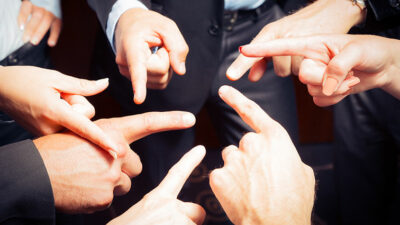Understanding the Challenge of Turbulence-Related Injuries in Business Aviation

The challenge of managing air turbulence in business and private aviation is becoming increasingly evident due to the growing number of turbulence-related incidents affecting aircraft operators across the industry. Operators must understand that even though these incidents are more common in commercial aviation, the potential impact on passengers’ and crewmembers’ well-being makes air turbulence-related incidents an important consideration in the business and private aviation industry as well.
Unexpected turbulence events can significantly affect cabin safety and comfort and may even pose a safety risk for those onboard. Business and private aircraft operators must be well-versed and proactive when addressing turbulence-related injuries. In this article, we delve into the relevance of turbulence issues to the business aviation sector and discuss why adopting appropriate safety measures and heightened vigilance is imperative in overcoming related challenges.
Insights from MedAire’s Case Data
Climate change has made turbulence a growing concern in the aviation industry. The International Air Transport Association (IATA) recognized this issue in 2018 when it launched its Turbulence Aware program. A safety research report published by the U.S. National Transportation Safety Board (NTSB) in 2021 found that turbulence-related accidents accounted for more than one-third of all accidents involving U.S. scheduled airlines from 2009 to 2018.
An analysis conducted by MedAire’s Dr. Paulo Alves, Global Medical Director of Aviation Health, and Dr. Justin Devlin, Medical Director of Aviation Assistance, uncovered an increase in turbulence-related cases between 2019 and 2023, with 123 cases identified in 2019 and 187 identified in 2023. The percentage of Turbulence-Related Events (TREs) compared with the overall number of cases reported to MedAire’s MedLink also increased significantly. Considering flight attendants often need to stand or move around the cabin to fulfil their responsibilities, it is important to highlight that they are at a higher risk of sustaining serious injuries during turbulence-related incidents than seated passengers.
Nausea and vomiting are the leading medical complaints in turbulence-related cases, followed by physical injuries. Between 2019 and 2023, there was an increase in fracture cases: one lower limb fracture case in 2019 versus three in 2023, and zero instances related to upper limbs in 2019 versus two in 2023. Moreover, a spike in TREs during the Northern Hemisphere summer months was observed in both 2019 and 2023.
It is essential for travellers and aviation professionals to be aware of the increasing turbulence risks and stay prepared, especially given the potential for continued growth increase due to climate change.

Turbulence and Business Aircraft: Unique Challenges
Turbulence can present various challenges for aircraft operators, affecting different aircraft types in distinct ways and can also have psychological repercussions for passengers and crewmembers. Smaller aircraft, including those used in business aviation, may be more susceptible to turbulence due to their lighter weight and smaller size, leading to more pronounced motion and discomfort for passengers. Passengers and crewmembers on business aircraft may be more likely to move around than those on commercial airlines, which poses a risk during unexpected turbulence, such as clear sky turbulence, as they may not have their seatbelts securely fastened.
In addition to physical discomfort, turbulence can contribute to psychological discomfort, such as fear of flying and anxiety while flying. These effects can be particularly alarming, with reminders of traumatic turbulence experiences triggering symptoms of post-traumatic stress disorder (PTSD) even after the event. The anticipation of encountering turbulence while flying can impact those with aviophobia, leading to avoidance behaviours and distress.
To address potential risks, business aviation operators must be aware of how the effects of turbulence differ depending on aircraft type and flight altitude. They must understand the factors contributing to turbulence at different elevations to anticipate and manage turbulence-related risks effectively. Implementing safety measures such as seatbelt recommendations, providing clear communication about turbulence in-flight and offering resources to help individuals cope with fear or anxiety related to flying are essential in improving passengers’ and crewmembers’ overall flying experience.
Conclusion
Operators should enhance their vigilance and adopt a proactive safety approach in response to the increase in turbulence. Understanding turbulence dynamics and aircraft-specific challenges is critical for risk management. Being prepared to address turbulence’s physical and psychological impacts is essential for passenger and crew well-being.
By adapting safety protocols and improving communication, the business aviation sector can achieve greater comfort and security for all onboard.

Flight departments around the world rely on MedAire, an International SOS company, to reduce their travel safety risks. Crews are trained on the resources to manage in-flight illness and injury with onboard medical equipment and telemedicine assistance. On the ground, passengers and crew have one resource for medical referrals; guaranteed payments for medical expenses; assistance with lost documents and prescriptions; online and e-mail travel advisories; evacuation support and a host of other services.
http://www.medaire.com/
© 2024 MedAire, Inc.. All Rights Reserved.
Related Posts

Leadership, Management and Safety: Embracing Compliance and Conformance Oversight
Aviation operations, and by default, safety, are based on the idea that regulatory requirements are fundamental to establishing a framework to achieve safe operations.

FAR Part 91 Safety – Is It Time for a Wake-Up Call?
The FAR Part 91 sector of aviation has long enjoyed an admirable safety record. Business aviation has always been perceived as a very safe and efficient way to fly.

